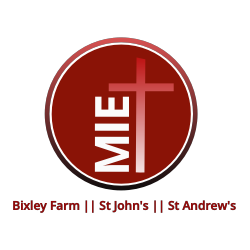The House of the Interpreter remains one of the most intriguing sequences of the whole of Pilgrim’s Progress, and in it Bunyan is laying out the key dynamics that will shape Christian’s experience of discipleship. Some speak to what he has already experienced, some are designed to prepare him for what lies ahead. As we see in the first picture, there are those authorised and able to teach such things, and to lead pilgrims safely on the way… and there are those who aren’t. It is more important than we might realise to make sure that we are listening to the right preachers, ‘lest in thy journey thou meet with some who pretend to lead thee right, but their ways go down to death’.
Interpreter draws on such homely and everyday images as dusty rooms; children waiting for gifts; a fire in a hearth; guards at a doorway; a prisoner; someone waking, trembling from a nightmare… from these humble, familiar analogies, profound spiritual truths are drawn to help Christian understand what he has already been through (e.g. his flirtation with morality and legalism), or to equip him for the journey ahead. He will face many difficulties and dangers, trials and temptations. These foundational truths will encourage our Pilgrim to press on, when his heart would otherwise fail. As with the rest of the book, we aren’t left to guess at the meanings of what we are shown. Interpreter lives up to his name.
Christian is schooled as to the presence and nature of sin in the human heart; he is taught the importance of valuing the new creation over the old; he is shown the grace of Christ in preserving His saints in the face of Satan’s opposition; he is warned of the danger of not putting into practise what we learn from Scripture, and of denying Christ; he sees the dangers of persecution and suffering; and he is shown how to live with an awareness that he does so before God, and in the light of the Day of Judgement… These are all lessons Christian will have to draw on later in the journey; and they are worth pondering in our own expereince of discipleship.
‘Then Interpreter said to Christian, Hast thou considered all these things?’ ‘Yes’ Christian replies ‘and they put me in hope and fear’. This (perhaps unexpected?) combination of emotions holds the Pilgrim in creative balance. it is a well known observation that the most frequently repeated exhortation in the Bible is for Christians to fear the Lord. But it is not a fear that shuts out hope, but one that rather gives lustre to a joyful hope of the New Creation. The fear of the Lord is the beginning of wisdom. Without it we cannot follow the path of pilgrimage.
Only as he leaves Interpreter’s house does Christian finally come to the cross. And finally he loses his burden, watching it roll into the tomb, ‘and I saw it no more’. The three Shining Ones bless him with peace, absolution, the robes of righteousness (Zech.3:4; Rev.19:8), a mark on his forehead (Ezek.9:4; Rev.7:3) and a scroll. Watch for that - it becomes significant later! In the meantime, Christian runs through surprise, wonder, weeping, joy and song in swift succession, and heads off down the narrow path!
The sequence of events as Bunyan describes them has caused quite a bit of discussion. Some feel that Christian has, well, become a Christian earlier, and that Bunyan’s point is that a person ‘may be a Christian and yet have a deep sense of the burden of sin’. This is undoubtedly true; but my own view is that it is only here, at the cross that Christian is saved. Only here is he freed from the guilt of sin, clothed in the righteousness of Christ, assured of peace with God and forgiveness by Him. Bunyan’s point is rather, that the Spirit can be leading us for some time before we actaully come to the cross. We can know quite a bit about Jesus, and what it would mean to follow Him, even before we are regenerated. We can experience quite a lot and still not be a Christian! Our journey to Christ starts before we come to the cross.
This is the thinking that lies behind courses such as Christianity Explored. And it is the experience of many of us in our own journey. Looking back, we can see God’s hand on us, guiding us to Calvary, long before we actually became Christians.
Questions to ponder:
Go back to the first picture Christian sees. What characterises a minister of the Gospel? Would you pray for these things in those involved in ministry at MIE?
What does it mean to fear the Lord?
How does hope feature in your life as a Christian?
Can you tell the story of how you became a Christian, tracing out how God lead you to the Cross of Christ, and what happened when you were converted? Can you find someone to tell that story to?

